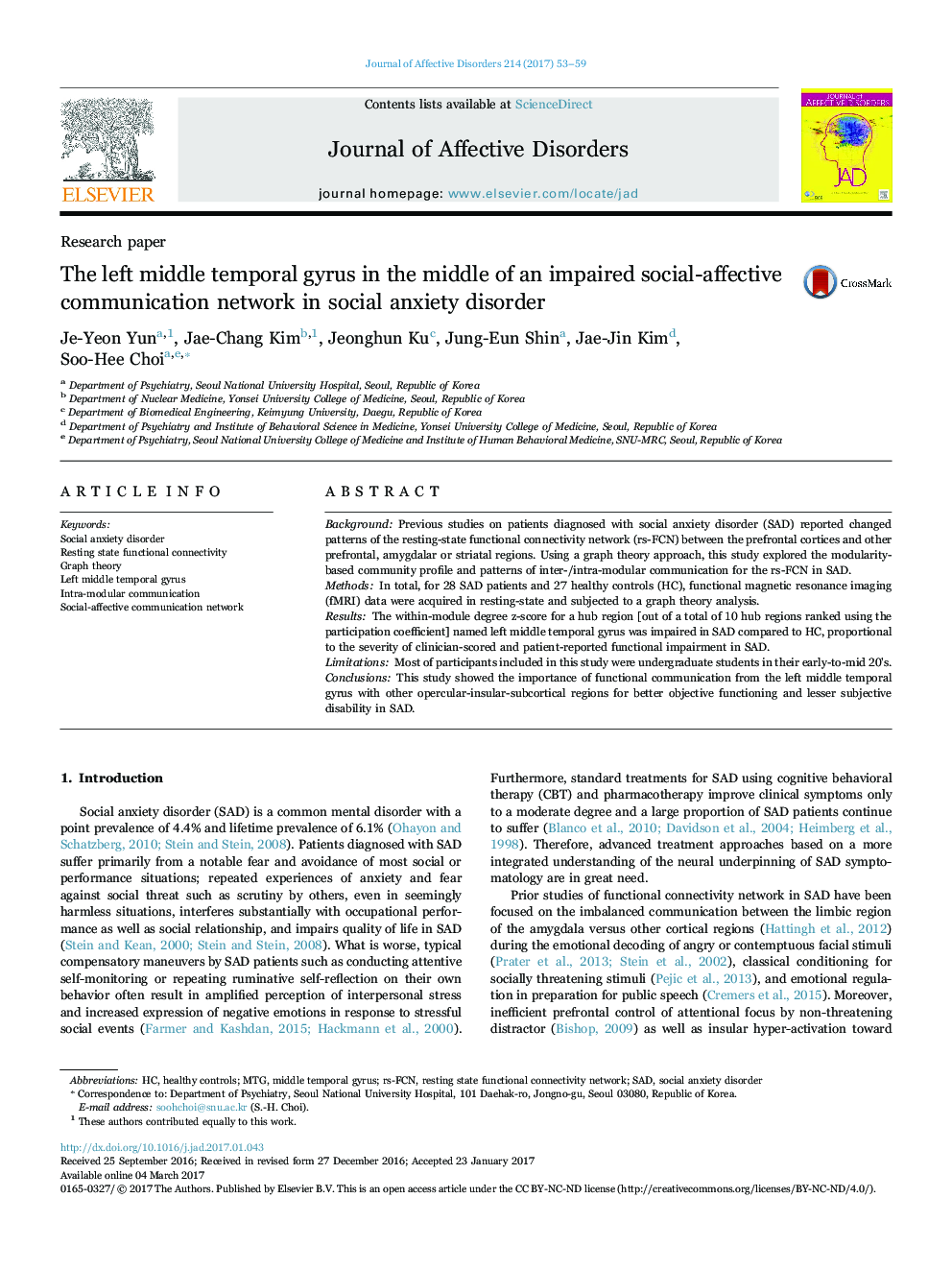| Article ID | Journal | Published Year | Pages | File Type |
|---|---|---|---|---|
| 5722033 | Journal of Affective Disorders | 2017 | 7 Pages |
â¢Global network integrity of resting state functional connectivity was comparable between social anxiety disorder and healthy controls.â¢Social anxiety disorder revealed weaker intra-modular communication of left middle temporal gyrus in the social-affective communication module, proportional to the functional impairment severity.â¢Imbalanced functional connectivity of left middle temporal gyrus could underlie the distress for social communication in social anxiety disorder.
BackgroundPrevious studies on patients diagnosed with social anxiety disorder (SAD) reported changed patterns of the resting-state functional connectivity network (rs-FCN) between the prefrontal cortices and other prefrontal, amygdalar or striatal regions. Using a graph theory approach, this study explored the modularity-based community profile and patterns of inter-/intra-modular communication for the rs-FCN in SAD.MethodsIn total, for 28 SAD patients and 27 healthy controls (HC), functional magnetic resonance imaging (fMRI) data were acquired in resting-state and subjected to a graph theory analysis.ResultsThe within-module degree z-score for a hub region [out of a total of 10 hub regions ranked using the participation coefficient] named left middle temporal gyrus was impaired in SAD compared to HC, proportional to the severity of clinician-scored and patient-reported functional impairment in SAD.LimitationsMost of participants included in this study were undergraduate students in their early-to-mid 20's.ConclusionsThis study showed the importance of functional communication from the left middle temporal gyrus with other opercular-insular-subcortical regions for better objective functioning and lesser subjective disability in SAD.
